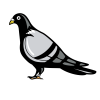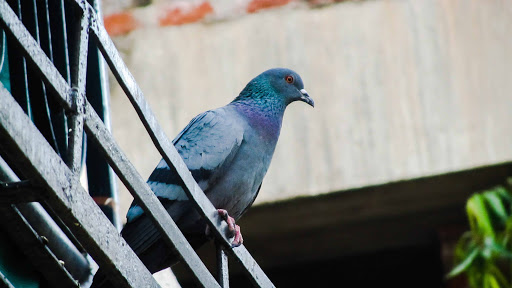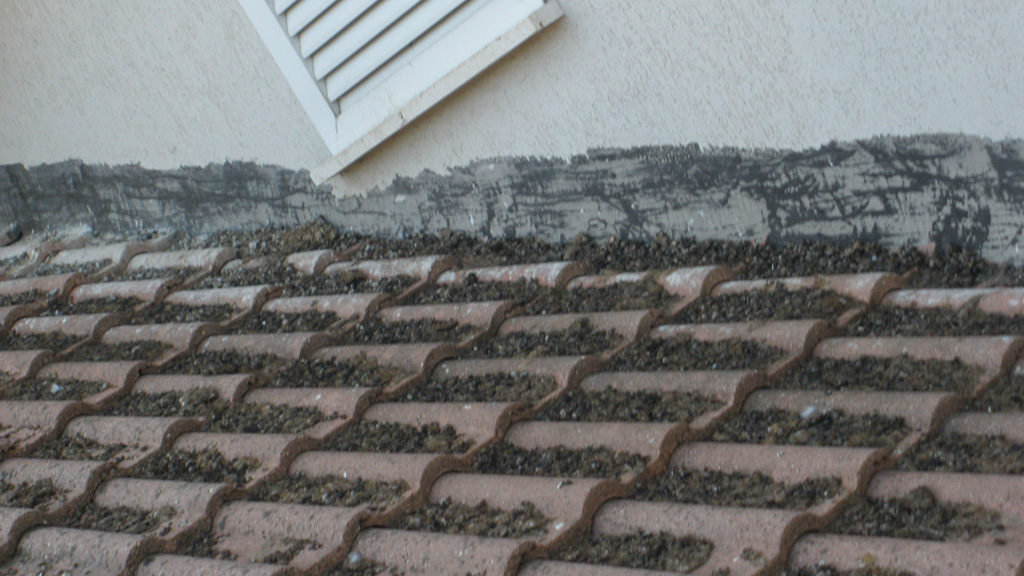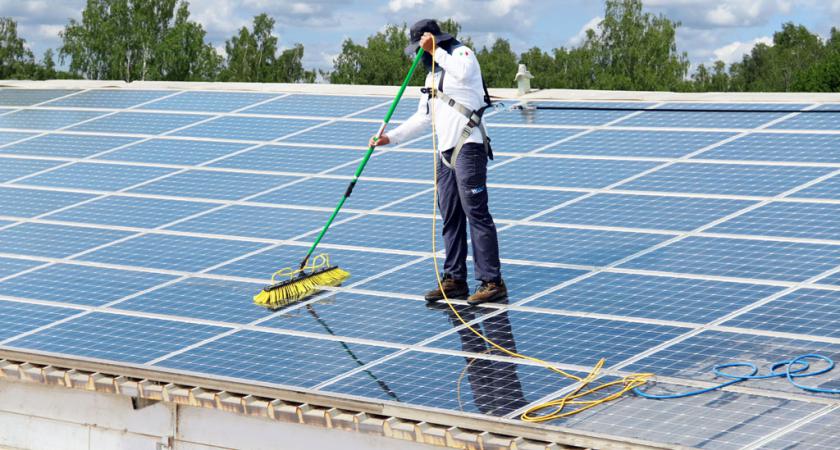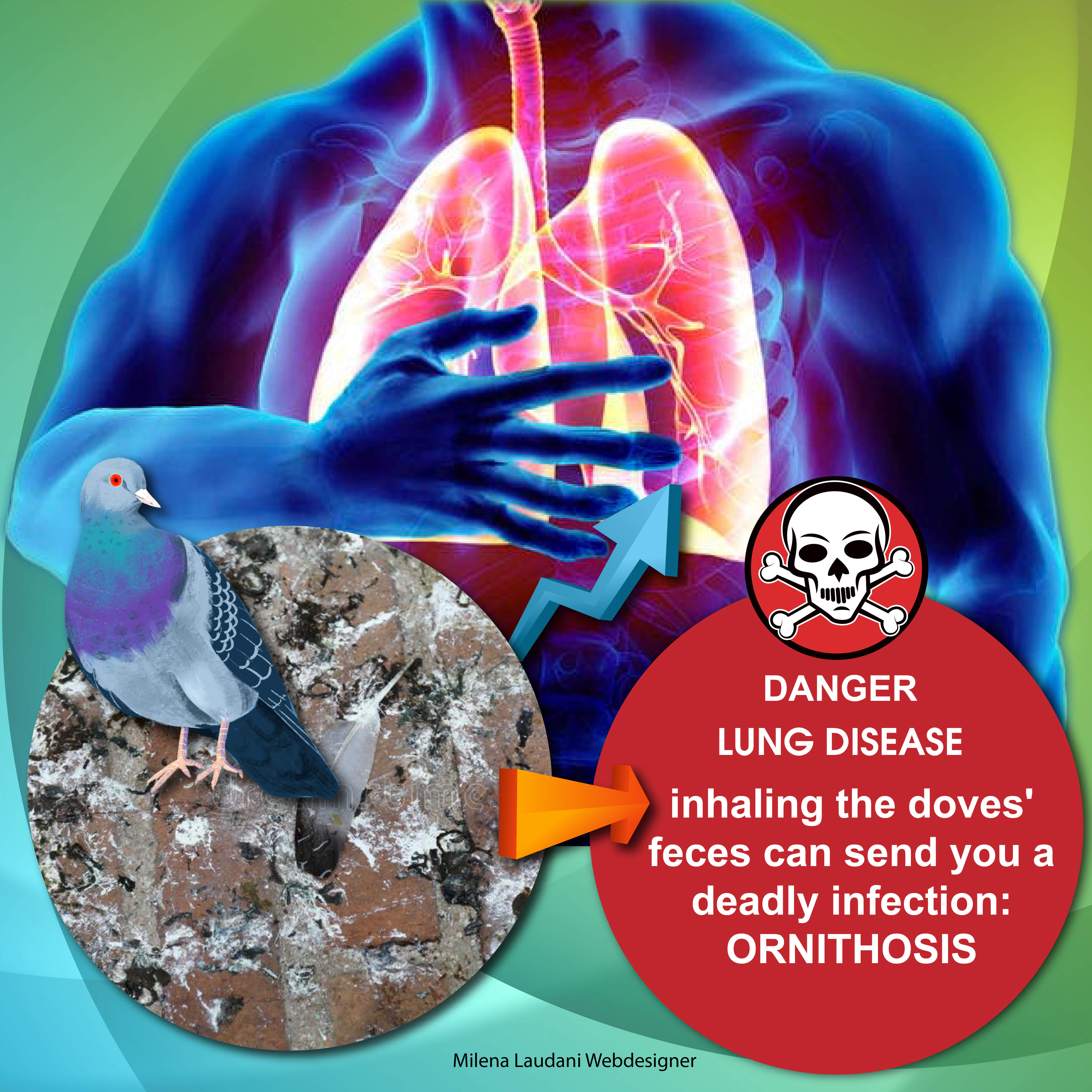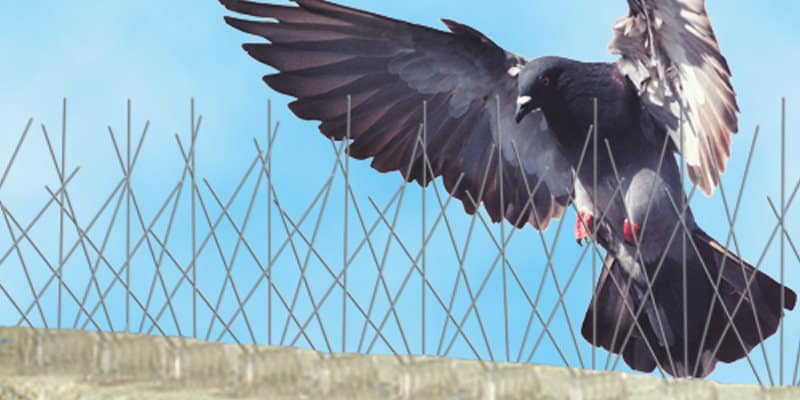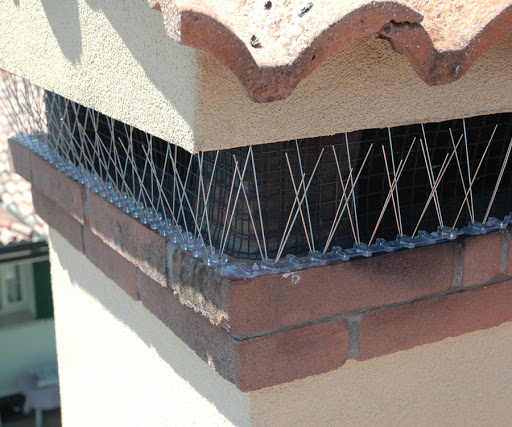COMMON BIRDS
The "birds" problem, especially the presence of pigeons and seagulls, is becoming more and more a serious sanitation and urban degradation concern, as they are birds with a high reproductive performance; an average of 5/6 annual matings with two eggs per brood. The places where they find shelter (attics, eaves, vaults, windowsills, eaves) and the areas infiltrated by the presence of organic substance (roofs, walls), are populated by pathogens and parasites (ticks and mites and pigeon lice) deriving from debris organic (the droppings and remains of dead birds). Bacteria expand freely in the air and reach public and private places, contaminating humans. The fecal contamination of the environment, the pulverization and dispersion of guano, the presence of nests in buildings, sometimes cause irreparable damage and are an occasion for the spread and contagion to humans of infectious diseases, such as Salmonella, avian flu and Psittacosis.
DAMAGES CAUSED
Pigeon droppings contain a large amount of acids diluted by rain or humidity, which penetrate into brick or stone structures. Metal structures also suffer injuries and damage due to the corrosive capacity of the guano. The presence of diluted organic substances, which infiltrate the roofs, triggers a process of sometimes irreversible degradation. Pigeons have learned to survive in most environments, as they feed on the foods we discard and need only a minimal amount of protected space to nest. The longer the birds are left undisturbed to infest and nest in an area where they should not be, the more difficult it will be to remove them. If in the past pigeons tended to be widespread mostly in the historic centers of cities, today many of them also reach peripheral and industrial areas.
Specialized Interventions
GUANO CLEANING AND REMOVAL
PHOTOVOLTAIC PANELS PROBLEM
Solar panels are often chosen as a resting and nesting place for various species of birds. Providing for the cleaning of the guano, for the removal of birds and for the installation of barriers, allows to guarantee the maximum yield of the solar and photovoltaic panels. maintenance is essential. Without maintenance, in fact, the systems do not function properly and there is a lower energy yield. One of the big problems for the panels is undoubtedly the parking and nesting of birds such as pigeons. The presence of these animals and the substances produced by them compromise the efficiency of the systems, as they reduce the cooling of the panels and therefore their operation.
A photovoltaic system full of dust and pigeon guano can lose up to 40% of efficiency !
It is good to know that the guano of birds exposed to the sun is pulverized and carried by the wind and is a vehicle for the transmission of over 60 infectious diseases such as salmonellosis, toxoplasmosis, and so on. Moreover, each of these cute little animals produces up to 12 kg of guano every year. In essence, it is a veritable mountain of organic material that covers the solar panels on the roofs, ruining them. In fact, guano is not only acid and corrosive but when it covers the solar panels it overheats the cells, which consequently deteriorate much more quickly.For these reasons our company Ecopiakos, first of all carries out a complete removal of the guano (disposing it as special waste) followed by intense sanitation carried out with the synergistic use of ecological methods and cutting-edge technologies, such as the use of non-toxic antiseptics and ozonation. All in compliance with the current USL Health Regulations.
OUR INTERVENTION
Pigeons use spaces in the upper parts of buildings, such as eaves and roofs, to nest. Balconies, eaves, chimneys, gutters, air conditioners, and pipelines are preferred nesting areas. With skill and professionalism we work to solve the problem. There is no magic wand ... Sometimes it is believed that to solve the problem of birds it is sufficient to install any accessory considered valid. Unfortunately this is not the case! A good anti-volatile product can be valid in one situation and ineffective or even counterproductive in another. However, it is important to always contact specialized installers.
REMOVAL METHODS
- There are many methods of bird removal. Remembering that they can never be harmed in any way, cutting-edge techniques have been developed to keep them away. From anti-intrusion nets to acoustic waves, from PVC balloons to new methods of falconry with trained birds of prey. Request an inspection from one of our technicians in your city. We will draw up the best strategy together and provide you with an accurate free quote.Remember that our bird removal interventions are directed to all the cities of Sicily.Our company offers specific methods of bird deterrence, including ecological ones. There are different removal methods that our company can implement in Enna, Catania, Palermo, Messina, Agrigento, Caltanissetta, Ragusa, Trapani, Syracuse:Visual bollards used especially in large car parks or spaces that need to remain clean. These are helium balloons that create a visual barrier for the birds that will encounter these "intruders" during the flight. However, the method must obviously be integrated with other systems.
- Electric bollards is a method for solving the dilemma of volatites on roofs, works of art, bell towers and churches. This system is as efficient as it is challenging to implement: a low voltage electrical conductor circuit is installed on the edges of roofs, balconies or eaves. The electricity transmitted does not kill the bird. Furthermore, this type of system has a very low visual impact.
- Chemical bollards these are chemical sprays or gels that are used for small interventions to remove birds on balconies or windowsills in Rome.
- Mechanical bollards obviously there are mechanical means of various kinds. Our technicians are able to install special nets to block the flight of birds on balconies and terraces or cornices. Another special type of mechanical bollard are the spikes. This system is quite decisive but has a high visual impact
- Falconry is a little used system, a real falcon is directed by a falconer will create a territoriality of the area infested by birds so as to avoid their presence for a period of time.
